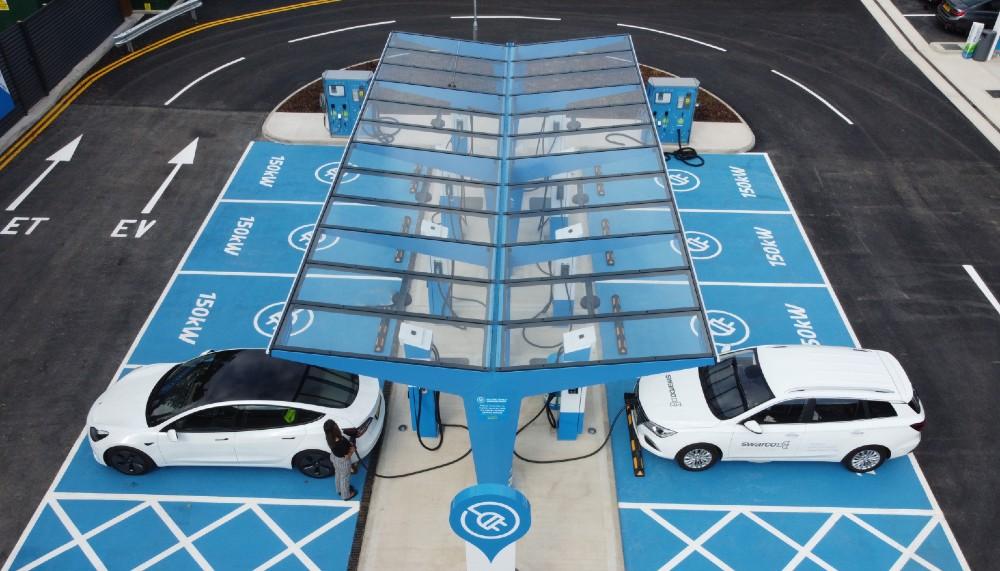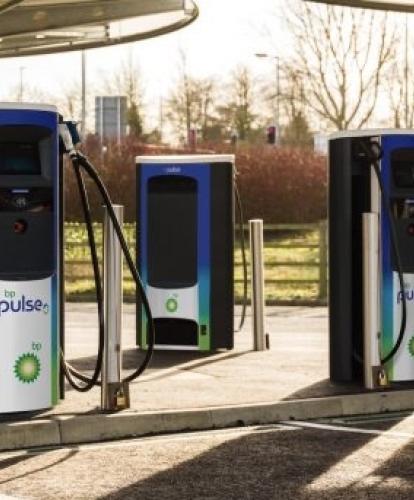The government has today unveiled plans to support the UK market in reaching 300,000 public electric vehicle (EV) charge points by 2030 – equivalent to almost five times the number of fuel pumps on our roads today.
Under the Electric Vehicle Infrastructure Strategy, backed by £1.6bn, the government’s aim is to make charging easier and cheaper than refuelling a petrol or diesel car, while new legal requirements on operators will see drivers of electric vehicles able to pay by contactless, compare charging prices and find nearby charge points via apps.
The new strategy sets out the Government’s aim to expand the UK’s charging network so that it’s robust, fair and covers the entire country – as well as improving the consumer experience at all charge points, with significant support focussed on those without access to off-street parking, as well as rapid charging for longer journeys.
£500 million will be invested to bring high quality, competitively priced public charge points to communities across the UK. This includes a £450 million Local Electric Vehicle Infrastructure [LEVI] Fund that will boost projects such as EV hubs and innovative on-street charging, so those without driveways don’t miss out on cleaner transport.
A pilot scheme for the LEVI fund launching today will see local authorities bid for a share of £10 million in funding, allowing selected areas to work with industry and boost public charging opportunities. Meanwhile the LEVI funding includes up to £50 million to fund staff to work on local challenges and public charge point planning – ensuring that any development complements all other zero emission forms of travel, such as walking and cycling.
The existing £950m Rapid Charging Fund will support the rollout of at least 6,000 high-powered rapid charge points across England’s motorways by 2035.
This comes on top of Ministers’ pledge to continue addressing any barriers to private sector rollout of charge points, such as local councils delaying planning permission and high connection costs. Ambitious and innovative charge point operators are already committed to installing an additional 15,000 rapid charge points across England’s entire road network – a quadrupling of the current offer – and over 100,000 on-street charge points by 2025.
“EV charging infrastructure is already growing at around 60% year on year in the two key areas of ultra-rapid charging and on-street provision, but it isn’t equally distributed. Some areas of the country are covered better than others — Scotland and London far more so than Wales and Northern Ireland, for example,” said Melanie Shufflebotham, Co-founder and COO at Zapmap.
“So more local funding is very welcome, but we need to look at diversity of charging needs and not just the 300,000 headline figure.”
In addition, the government is mandating that operators provide real-time data about charge points, something that Zapmap already displays, with around 70% of charge points showing live availability status on its iOS/Android and desktop maps. The government is also ensuring that consumers can compare prices and seamlessly pay for their charging using contactless cards. They will also be able to use apps to find their nearest available charge point.

MFG EV Power plans to deliver 60 ultra-rapid charging hubs across the UK in 2022.
“As more drivers make the switch to electric vehicles, fewer proportionally will have home chargers and as a result be reliant on the public network for day-to-day charging. This is where the local charging initiatives are critical, whether this is low-powered on-street provision for overnight charging or local charging hubs,” Shufflebotham continued.
“In parallel, the en-route rapid charging network needs to continue to grow, with a greater number of charge points at each location, to provide high-speed, reliable charging for all.”
The plans will also require a 99% reliability rate at rapid charge points to ensure they are world-class, and give consumers confidence in finding charge points that work wherever they travel – helping eradicate so-called ‘range anxiety’.
“It’s brilliant to see greater funding, and a commitment to making charging and paying for charging simpler, as we do through the Zapmap app, including live status data and cross-network payment with Zap-Pay. Electric vehicles are at the tipping point into mainstream, so it’s crucial we make EV charging as straightforward and fair as possible,” Shufflebotham added.
Even with recent trends in electricity prices, EVs still benefit from lower fuel, running and maintenance costs than their petrol and diesel equivalents and the strategy hopes to encourage drivers across the nation to make the switch. Production costs also continue to fall and some analysts expect purchase price parity with petrol and diesel cars to be reached well within the 2020s.
This forms part of wider Government plans to reduce the UK’s reliance on imports of foreign oil, improving the security of our energy supply and reducing the country’s vulnerability to volatility in global energy prices.
“No matter where you live – be that a city centre or rural village, the north, south, east or west of the country, we’re powering up the switch to electric and ensuring no one gets left behind in the process,” said Transport Secretary Grant Shapps.
“The scale of the climate challenge ahead of us all is well-known, and decarbonising transport is at the very heart of our agenda. That’s why we’re ensuring the country is EV-fit for future generations by the end of this decade, revolutionising our charging network and putting the consumer first.”
The private sector plays a key role in helping the country make the switch to electric and the UK’s most-used charging network company, bp pulse, is also announcing its own plans today to spend £1 billion on developing charging infrastructure in the UK, supporting hundreds of new jobs.



